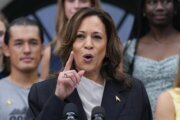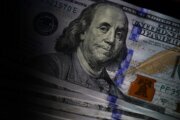BEIJING (AP) — Asian stock markets fell Wednesday after U.S. inflation edged down less than expected, fueling concern the Federal Reserve might think more interest rate hikes are needed.
Market benchmarks in Tokyo, Shanghai, Hong Kong and Sydney declined. Oil prices retreated.
Wall Street ended mixed Tuesday after inflation slowed to 6.4% in January from the previous month’s 6.5%. That was down from June’s three-decade high of 9.1% but hotter than the consensus expectation of 6.2%.
Core inflation, which strips out more volatile food and energy prices to give a clearer view of the trend, rose to 0.4% over a month earlier from December’s 0.3%.
“Disinflation trends are in danger, which could prompt the Fed to both deliver more rate hikes and for them to stay higher for longer,” said Edward Moya of Oanda in a report.
The Shanghai Composite Index lost 0.3% to 3,283.19 and the Nikkei 225 in Tokyo gave up 0.4% to 27,491.51. The Hang Seng in Hong Kong tumbled 1.4% to 20,806.24.
The Kospi in Seoul retreated 1.1% to 2,438.28 and Sydney’s S&P-ASX 200 sank 1.2% to 7,345.70.
New Zealand and Southeast Asian markets also declined.
Stock prices have swung between gains and losses over the past year as traders try to figure out how far the Fed and other central banks will go to extinguish surging inflation. Some worry central bankers might be willing to tip the global economy into a recession.
Traders expect two more U.S. rate hikes of 0.25 percentage points this year to slow business activity and hiring. Some expect cuts to start as soon the end of this year despite comments by Chair Jerome Powell and other Fed officials that borrowing costs might have to stay elevated for an extended period to get inflation to their 2% target.
On Wall Street, the benchmark S&P 500 index edged down less than 0.1% to 4,136.13. The Dow Jones Industrial Average lost 0.5% to 34,089.27 while the Nasdaq gained 0.6% to 11,960.15.
The Fed’s benchmark lending rate stands at 4.50% to 4.75%, up from close to zero a year ago.
Investors have been raising their forecasts for how high the Fed will take rates by the summer, and they’re now betting on a 19.2% probability that its key rate will top 5.5% in July. That’s up from just a 0.2% probability seen a month ago, according to CME Group.
The market’s expectations for the Fed have been driving yields higher in the bond market in particular. The two-year Treasury has shot to its highest level since November, egged on last week by a stronger-than-expected report on the U.S. jobs market.
The two-year yield rose to 4.61% from 4.52% late Monday. It initially zig-zagged up, down and back again after the release of the inflation report.
The 10-year yield, which helps set rates for mortgages and other loans, rose to 3.75% from 3.70%.
In energy markets, benchmark U.S. crude lost 37 cents to $78.69 per barrel in electronic trading on the New York Mercantile Exchange. The contract fell $1.08 on Tuesday to $79.06. Brent crude, the price basis for international oil trading, shed 38 cents to $85.20 per barrel in London. It lost $1.03 the previous session to $85.58.
The dollar declined to 133.04 yen from Tuesday’s 133.06 yen. The euro retreated to $1.0722 from $1.0739.
Copyright © 2024 The Associated Press. All rights reserved. This material may not be published, broadcast, written or redistributed.







